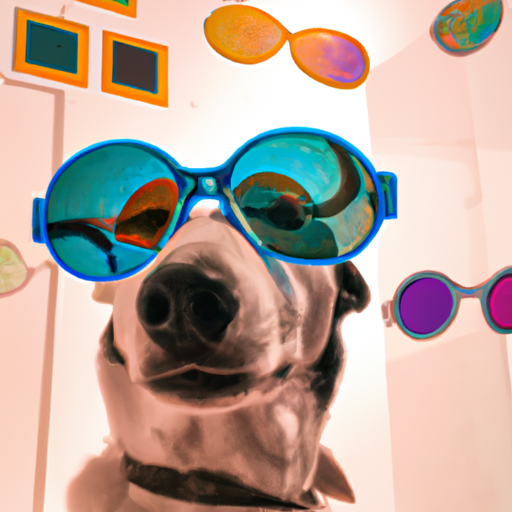Understanding Dog’s Vision: The Basics
As a caregiver, you’re probably already aware that dogs don’t see the world the same way as humans do. Dogs’ vision differs from ours in several fundamental ways.
Firstly, dogs are dichromats, which means they see only two primary colors, blue and yellow. They can’t distinguish red and green. So, when you throw a red ball in the green grass, your dog finds it based on movement or smell, not color.
Secondly, dogs have a wider field of view than humans. Our vision encompasses about 180 degrees, whereas dogs can see up to 270 degrees. This broad field of view allows dogs to detect movement more easily, which is a trait passed down from their ancestors who had to hunt for survival.
Lastly, dogs have a better night vision than humans. Thanks to a special light-reflecting layer behind their retinas called the tapetum lucidum, dogs can see in the dark much better than we can.
How Dogs Perceive Colors
Dogs may not see the full range of colors that humans do, but that doesn’t mean their world is monochrome. Here’s a simple table to illustrate the color perception differences between humans and dogs:
| Human Colors | Dog Equivalent |
|---|---|
| Red | Dark Brown |
| Green | Yellowish |
| Blue | Blue |
| Yellow | Yellow |
The Remarkable Night Vision of Dogs
Being able to see in the dark is a survival trait that dogs have retained from their wolf ancestors. Dogs are natural hunters, and having excellent night vision gives them a significant advantage.
In addition to the tapetum lucidum, dogs also have more rod cells in their eyes, which aid in low-light vision. As a result, they can navigate easily in dim light conditions, making those late-night walks a breeze for them.
Impact of Breed on Vision
Not every breed sees the world in the same way. Some breeds are better equipped for certain visual tasks than others. For example:
- Sighthounds such as Greyhounds, Whippets, and Afghan Hounds have excellent peripheral vision, making them excellent at chasing down prey.
- Terriers, on the other hand, are bred to chase small animals in the ground, so they have good close-up vision.
- Retrievers have a strong sense of color differentiation, making them great at fetching.
Keeping Your Dog’s Eyes Healthy
As a caregiver, it’s important to maintain the health of your dog’s eyes. Here are some tips:
- Regularly check your dog’s eyes for redness, cloudiness, or unusual discharge.
- Schedule regular vet visits for eye check-ups.
- Keep your dog’s face clean and hair away from the eyes.
- Provide a balanced diet rich in antioxidants, which are beneficial for eye health.
FAQ
Q: Can dogs see in complete darkness?
A: No, dogs cannot see in total darkness. They have better low-light vision than humans but still need some light to see.
Q: Do dogs see in black and white?
A: No, dogs do not see in black and white. They can perceive blue and yellow colors.
Q: Can dogs watch TV?
A: Yes, dogs can watch TV, but they perceive the images differently than we do. They are more attracted to the movement on the screen than the actual content.
Q: Does a dog’s vision deteriorate with age?
A: Yes, just like humans, dogs can experience vision loss or changes as they age. Regular vet check-ups can help detect any potential issues early.



